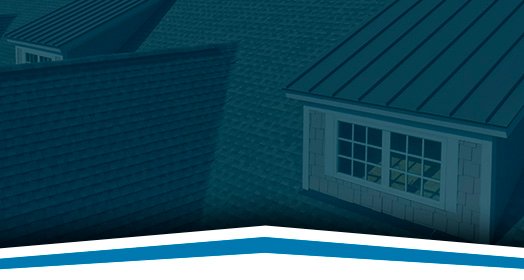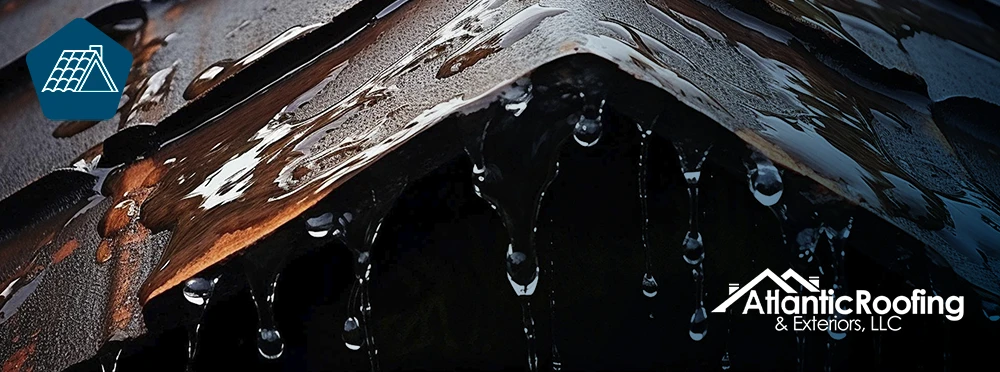Primary Causes of Roof Leaks in Levy County
1. Severe Weather Conditions
Due to its location, Levy County experiences extreme weather conditions that can weaken roofing systems over time. Some of the most damaging weather-related problems include:
A. Heavy Rainfall and Hurricanes
Florida is known for its intense rainstorms and hurricanes, which can damage even the best-maintained roofs. Prolonged exposure to heavy rain can cause:
- Water pooling which is linked to the roof’s shape. Flat or low-slope roofs are especially prone to standing water, which can seep into cracks and cause leaks.
- Wind-driven rain – High winds during storms can force water underneath shingles, flashing, and other roofing components.
B. High Winds and Storms
Strong winds can lift or tear off shingles, exposing the underlying roof deck to water damage. In addition, debris composed of tree branches and flying objects can also puncture roofing materials, creating entry points for moisture.
C. Hail Damage
Although hail is not a usual weather event in Levy County as it is in other parts of the country, it can still cause significant damage when it occurs. Hailstones can crack or dislodge shingles, leading to leaks over time.
2. Poor Roof Installation and Workmanship
Even the best-quality roofing materials can fail when not properly installed. The most common installation mistakes that lead to leaks include:
- Improper flashing installation – Flashing is used to seal joints around chimneys, vents, and skylights. If not properly installed, it allows water to seep in.
- Incorrect shingle alignment or fastening – Misaligned shingles or not securely nailed can allow water penetration.
- Inadequate underlayment – The underlayment acts as a secondary barrier against water. Poor-quality or improperly installed underlayment can fail prematurely.
In addition, homeowners should always hire licensed and experienced roofing contractors in Levy County to ensure proper installation.
3. Aging and Deteriorated Roofing Materials
All roofing materials have a limited lifespan, and over time, they naturally degrade due to exposure to the exterior elements and strong weather events.
The most common signs of an aging roof include:
- Curling or missing shingles – Asphalt shingles may curl, crack, or fall off over time.
- Rusty or corroded metal roofing – Metal roofs can develop rust holes, especially in coastal areas due to the corrosion salty air causes.
- Cracked or broken tiles – Clay or concrete tiles may crack due to the expansion and contraction caused by temperature changes.
Since Levy County’s warm and humid climate speeds up wear and tear, homeowners should inspect their roofs regularly and consider replacements when the roofs are too old or have suffered serious damage.
4. Clogged Gutters and Poor Drainage
Gutters play a crucial role in protecting the roof by directing water away from the surface and foundation. When gutters are clogged with leaves, pine needles, or debris, water can back up and seep under roofing materials. In addition:
- Sagging gutters – If gutters are not properly secured, they can pull away from the roof, causing water to spill over and damage the fascia and soffit.
- Improper slope – Gutters must be angled correctly to allow water to flow toward downspouts. When that’s not the case, water can pool and cause leaks.
Regular gutter cleaning and maintenance is critical to prevent these issues.
5. Damaged or Missing Flashing
Flashing is a thin metal strip installed around roof penetration points, such as chimneys, vents, and skylights, that prevents water intrusion. Over time, flashing can:
Flashing is a thin metal strip installed around roof penetration points, such as chimneys, vents, and skylights, that prevents water intrusion. Over time, flashing can:
- Corrode – Especially in coastal areas where salt air accelerates rust.
- Become loose – High winds or improper installation can cause flashing to detach.
- Crack or separate – Temperature fluctuations can cause expansion and contraction, leading to gaps.
Inspecting and repairing flashing is very important to preserve it and it is a procedure that should be included in roof maintenance.
6. Tree Damage and Overhanging Branches
Levy County’s lush vegetation, although beautiful, can pose risks to roofs because of:
- Falling branches – During storms, branches usually break off and can puncture the roof.
- Rubbing damage – Overhanging branches can scrape against shingles, wearing them down over time.
- Debris accumulation – Leaves and pine needles, when accumulated, trap moisture, leading to rot and mold growth.
Regularly trimming trees near the roof significantly helps to prevent these issues.







